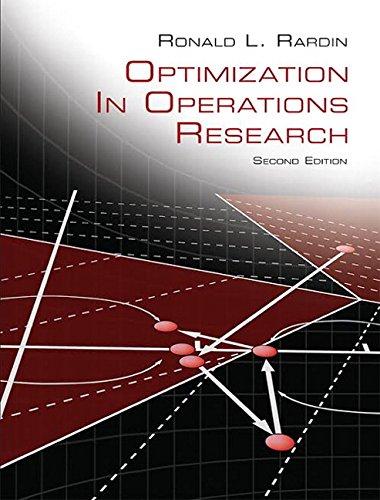A new automatic storage and retrieval (ASAR)6 area is being added to an existing warehouse on land
Question:
A new automatic storage and retrieval
(ASAR)6 area is being added to an existing warehouse on land already owned by the company. It will have n Ú 1 aisles, each with pallet storage cells on both sides and a stacker crane moving in the middle which can carry a pallet to/from any location in the aisle. Storage must be provided for a total of at least p pallet cells of width w, depth
d, and height h feet. All racks will be m Ú 1 cells high, and k cells from one end of the aisle to the other on each side. The total building height should not be more than t feet, including a clearance of u feet between the top of the racks and the ceiling. Aisle width will be 150%
of pallet depth to allow for clear passage of pallets carried by the cranes, and their length should accommodate the k storage cells plus one extra pallet width to provide for an input/output station at the end. The ASAR area and its input/output stations will be enclosed with a roof and walls on three sides, being open only on the end (perpendicular to the aisles) where it adjoins the existing warehouse. Engineers want to find a minimum total cost design for the new facility using c1!
unit cost of cranes, c2! unit cost of steel racks per pallet storage cell, together with c3, c4, and c5 being the construction cost per square of foundation/
floors, ceilings, and sidewalls, respectively.
Formulate an NLP model to choose an optimal design in terms of decision variables n, m, k, and building exterior dimensions x (perpendicular to the aisles) y (parallel to the aisles), and z (height).
Take all other symbols as constant.
Step by Step Answer:






